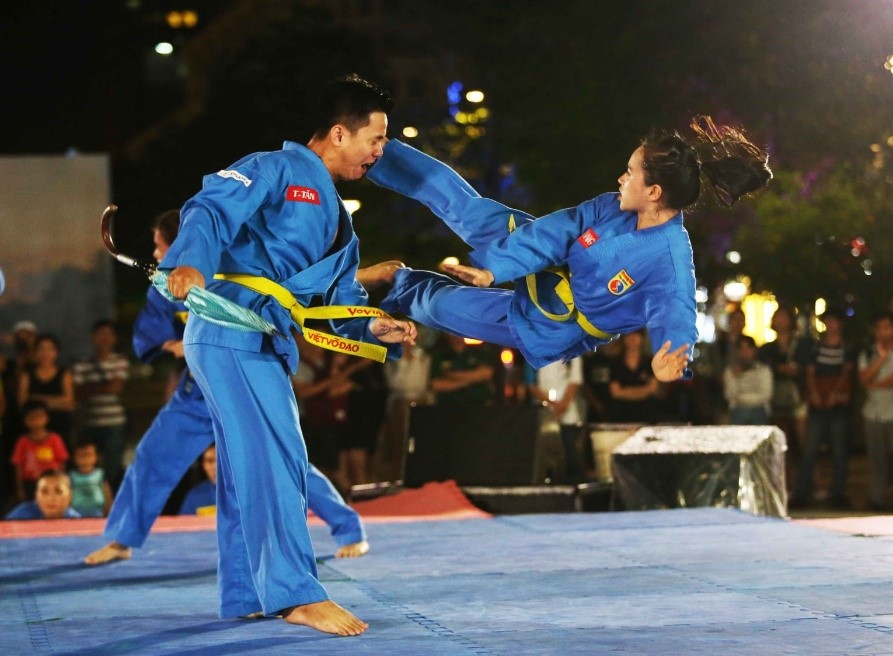
© ICM, 2018 |
|
|
|
|
| General Information |
Vovinam is a Vietnamese martial art founded by Nguyen Loc (1912–1960) in the late 1930s. The system had the intent to provide an efficient means of self-defense as well as serve as an ideological basis for national identity and patriotism (Tran 2001: 652). Nowadays the system still includes training of the mind, next to training the body. The spiritual aspect is important and harmony, courage, fairness, tolerance and modesty are highly valued (Traditional Sports, s.d.; Dung, Vy & My 2016: 70).The system combines skills form Vietnamese martial arts, Vietnamese wrestling and Chinese kung fu (Dung, Vy & My 2016: 70).Vovinam literally means ‘martial arts of Vietnam’, vo meaning martial arts. In 1964 Viet Vo Dao was added to the name, literally ‘the philosophy of Vietnamese martial arts’ (Tran 2001: 655). The full name is vovinam viet vo dao but the system is still mostly known as just vovinam.In vovinam strikes using bare hand, elbow, leg, knee and strikes with weapons like sword, broadsword, machete, knife, staff, fan etc. are used. Practitioners are also thought how to fight an armed opponent, counter-attack, unlock and wrestle (Dung, Vy & My 2016: 70). |
| History/Development |
The system was founded in the north of Vietnam by grandmaster Nguyen Loc in 1936. It was practiced in secret until he made his theory public in 1938 (Dung, Vy & My 2016: 70). After 1975 vovinam became known throughout the world. Many instructors fled Vietnam due to the new communist regime and passed on their knowledge elsewhere (Tran 2001: 656). |
Transmission
(Policies/institutions) |
Vovinam became popular in France, even though it was originally developed against French colonialism, it is also practiced in Cambodia, Thailand, Singapore, Belgium, Poland, Denmark, Switzerland, Sweden, Italy, Australia, India, Iran, the U.S., Canada, etc. (Traditional Sports, s.d.; Dung, Vy & My 2016: 70). After the establishment of the World Vovinam Federation many national and continental federations followed. In 2011 vovinam first entered the competition field by taking part in the 26th South East Asian Games (Dung, Vy & My 2016: 70). |
| Relevant Organisations |
- World Vovinam Federation (WVVF)
- European Vovinam Viet Vo Dao Federation (EVVF)
- South East Asian Vovinam Federation (SEAVF)
- African Vovinam Federation (AFVF) |
| Additional Materials |
|
| References |
- Tran, M. (2001). “Vovinam/ Viet Vo Dao”. In Green, T. and Svinth, J. (eds.) Martial Arts of the World: An Encyclopedia of History and Innovation. Santa Barbara, CA: ABC-CLIO.
- Traditional Sports. (s.d.).
https://www.traditionalsports.org/traditional-sports/asia/vovinam-vietnam.html
- Dung, V. V., Vy, B. T. K. & My, P. T. (2016). “The Role of Vovinam in the Life of Vietnamese People”. In European Journal of Physical Education and Sport Science, vol. 2 issue 2, 2016. | | |